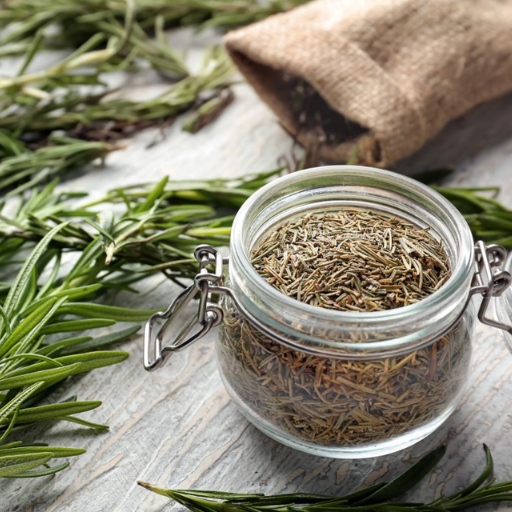Rosemary can be dehydrated to preserve its robust flavor and aromatic properties. If you enjoy cooking or are a home gardener who wants to make your crop last longer, this ultimate guide on drying rosemary is for you! We cover everything from choosing the best sprigs to different dehydration techniques so you can achieve great results every time. When we’re done here, you will know how to store and use dried rosemary long after the growing season has passed.
What is the Best Way to Dry Rosemary?
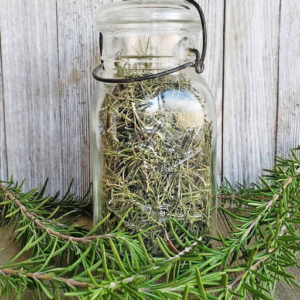
Image source: https://www.thepurposefulpantry.com/
There are several easy ways of drying rosemary, all producing great results. One very effective method is air-drying: tie a bunch of fresh rosemary stalks together with some twine and hang them upside down in a dark place with good air circulation. Depending on humidity levels, this could take anywhere from one week up to two weeks. You might prefer using a dehydrator set at low heat (95°F – 115°F / 35°C -46°C), which would speed things along considerably; about two hours should do it at these temperatures, but no more than four hours max! Or if speed is essential, try spreading it out on a baking tray instead, then placing it into an oven preheated just enough so as not to burn our delicate herbs (170F/76C works perfectly). Either way, check regularly until fully dried before putting them away in airtight containers where they’ll stay fresh much longer than any other arrangement.
Learn How to Dry Rosemary at Home
Here are three methods from which to choose for drying rosemary at home.
- Dehydrator: A food dehydrator can dry your rosemary quickly and easily. You should set it to low heat (95°F – 115°F or 35°C – 46°C) and place the sprigs in one layer only. Moisture content determines how long this will take, but typically, it’s around two to four hours.
- Dehydrator: A food dehydrator can dry your rosemary quickly and easily. You should set it to low heat (95°F – 115°F or 35°C – 46°C) and place the sprigs in one layer only. Moisture content determines how long this will take, but typically, it’s around two to four hours.
- Oven Drying: If you want your rosemary dried quickly, use an oven. Turn the oven to its lowest setting (170°F/76°C), spread out the rosemary sprigs on a baking sheet, and keep an eye on them for about two to four hours so you don’t burn any leaves by leaving them unattended too long.
No matter which method is used, ensure that all moisture has been removed from the rosemary before it is placed into a sealed container for storage, where its taste and smell will be kept until needed again.
Using a Dehydrator to Dehydrate Rosemary
Fresh rosemary sprigs should be prepared by selecting healthy sprigs and rinsing them thoroughly to dehydrate the herb using a dehydrator effectively. For optimal drying, set your dehydrator at a temperature between 95°F and 115°F (approximately 35°C to 46°C). Place the rosemary evenly on the dehydrator’s trays, ensuring they are not crowded so that air can circulate properly. Check periodically for doneness while dehydrating for about two to four hours. When ready, the needles will become crispy and easily crumble. After this step, store your dried rosemary in an airtight container away from light and moisture to retain its vibrant flavor and aroma. This method ensures longer shelf life for herbs while preserving their essence.
How to Dry Rosemary in the Oven
An oven is an efficient way of drying rosemary quickly. First, preheat the oven to its lowest setting, ideally around 170°F (77°C). Rinse fresh sprigs under cool water before patting them dry, then spread evenly on parchment paper lined baking sheet, ensuring that they aren’t piled on each other, allowing an even drying process. The baking sheet should be placed into a preheated oven, where it should stay for about two to four hours, with checks every thirty minutes until leaves are crisp enough to crumble between fingers easily when touched. Cool down before storing in an airtight container away from light/moisture; this helps maintain flavor/aroma over months, allowing you to enjoy culinary dishes enriched by the essence of rosemary through efficient methods like these.
How to Prepare Fresh Rosemary for Drying?
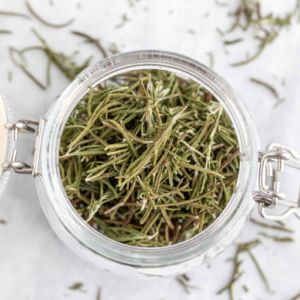
To dry fresh rosemary, you’ll want to start with green, healthy-looking sprigs from the plant. Wash them under cool water to get rid of dirt or bugs, and gently pat them dry with a clean towel so they aren’t too wet. Next, remove any bruised or brown leaves—these will just ruin your dried herb’s quality. If you’d like, chop it into smaller pieces.
Harvesting Rosemary Sprigs
Wait until the rosemary plant is fully grown. This usually takes place in summer and early spring. Use sharp scissors or sharp garden shears to cut off sprigs no less than 6 inches long from their top third for such parts to grow better. Ensure you cut them cleanly so as not to harm the rest of the plant too much. Harvest in the morning after the dew has evaporated for optimal levels of essential oil. Do not take more than one-third of a single plant at once, making it harder for your rosemary to grow back healthy again. You can use the fresh rosemary immediately or dry it out later when you want some for yourself.
Cleaning and Preparing Rosemary Leaves
Wash the sprigs under cold running water to eliminate dirt or particles when cleaning and preparing rosemary leaves. Since wet leaves can cause spoilage, pat them with a clean kitchen towel or paper towel to remove excess moisture. After this, strip off the leaves from the woody stems by moving your fingers down the length of the spring and discard any damaged or discolored ones. If you need chopped rosemary for recipes, use a sharp knife or herb scissors to finely mince cleaned leaves. This will release essential oils that enhance the flavor of your dishes. For short-term storage, place unused rosemary in an airtight container and keep it in the refrigerator; alternatively, dry it for long-term storage.
Why Fresh Rosemary Needs to Be Completely Dry
For several important reasons, fresh rosemary must be completely dried before storing it. To begin with, moisture helps grow mold, which can ruin herbs, make them unfit for eating, and affect taste quality. Secondly, drying enhances aromatic oils present in these plants, thereby intensifying their flavors suitable for robust culinary uses such as stews and soups where strong seasonings are needed, most often like Italian cuisine dishes such as pizza topping mixtures made from various spices, including oregano basil garlic. Finally, shelf life increases when fully dehydrated rosemary is stored because color retention along with potency preservation occurs, which is crucial in maintaining beneficial properties and usability of a wide range of cooking styles involving Mediterranean cuisine dishes, including grilled meats, skewers, seasoned potatoes, roasted vegetables. Therefore, ensure thorough drying of your herbs so you enjoy all their advantages and deliciousness while preparing meals using different types of international food recipes every day, week, month, year, and forever until the end.
What are the different methods for drying rosemary?
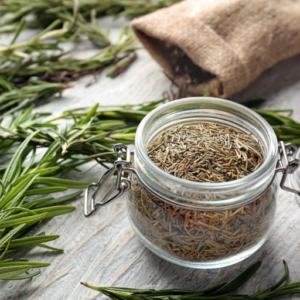
Here are some of the best ways to dry rosemary, and all of them will give you awesome results based on what you like and the resources that you have:
- Air Drying: This age-old method consists of tying together small amounts of rosemary twigs and hanging them upside down in a warm, well-ventilated area away from sunlight. The process typically lasts anywhere between one week to two weeks.
- Oven Drying: If time is not on your side, spread your rosemary leaves evenly on a baking sheet in an oven preheated at its lowest temperature (about 150°F or 65°C). Keep it slightly ajar to let out moisture. Check every fifteen minutes until they become dry and brittle, which should take about one hour but no more than two hours.
- Dehydrator: If you own a food dehydrator, it can be an effective tool for quickly drying rosemary. Evenly distribute the leaves across trays, then set the temperature around 95-115 degrees Fahrenheit (35 -46 degrees Celsius). In most cases, it takes between two and four hours before they’re fully dried.
- Microwave Drying: Place fresh pieces of rosemary between two sheets of paper towels and microwave on low power for short periods (around thirty seconds), checking constantly until fully dried out. It’s fast – usually under two minutes – but requires extra caution not to burn them.
Depending on your time or the equipment you want to use, different methods offer various advantages over others.
Air Drying Rosemary: A Natural Way to Dry
Air drying is one of the easiest and most natural ways to keep rosemary’s flavor and fragrance. This method works well in dry, warm environments with good ventilation. You can tie rosemary sprigs with twine to make small bunches for air drying. Hang this upside down in a dark place that does not get direct sunlight, as light deteriorates the quality of the herb. Depending on humidity levels and airflow, complete dryness usually takes about one to three weeks. Once dry, you can easily remove leaves from stems, which should be kept in an airtight container to stay fresh until used in cooking or other applications. This method preserves essential oils, making it popular among home cooks and herb enthusiasts.
Drying Rosemary in a Food Dehydrator
For an even drying process that will maintain the flavor and scent of your herb, use a food dehydrator to dry rosemary. Begin by washing the sprigs and patting them dry gently. After this, remove excess leaves and place the sprigs on the dehydrator’s trays in a single layer. Be careful not to overcrowd, as this can hinder airflow. The temperature setting should be between 95°F (35°C) and 115°F (46°C). Depending on how humid it is outside, you can expect drying time to take anywhere from one hour up to four hours. You must check on their progress frequently; once crumbly leaves start falling off stems easily, they are done drying. To keep your dried rosemary potent, store it in an air-tight container placed somewhere cool and dark.
Using a Microwave to Dry Rosemary Quickly
Another option for quickly preserving flavor without waiting for air drying or dehydration is microwaving. This method requires rinsing each sprig well before using paper towels to pat them dry off completely afterward. Then, spread out evenly between two separate sheets of dry paper towel laid over the top of a plate safe for use in microwaves before cooking at a high power level at intervals of no longer than thirty seconds because burnt herbs are not tasty! It typically takes one minute, though sometimes three minutes, depending upon wattage used by microwave ovens, until crispy enough when cooled down afterward so they’re ready for storage inside an airtight container away from light exposure, which will help retain essential oils best suited towards culinary purposes later on.
How to Store Dried Rosemary Properly?
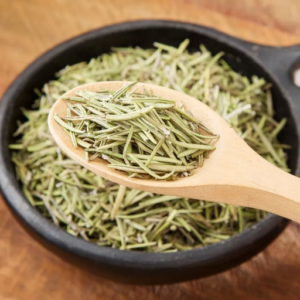
After drying the rosemary, allow it to cool completely before storing it. For the best results, use an airtight container such as a glass jar or vacuum-sealed bag. Keep in a dark, cool place like a cupboard or pantry to protect from light and heat, which can help maintain flavor and potency. For maximum freshness, mark the container with the date of drying; use within six to twelve months. Do not refrigerate or freeze because this may cause quality loss due to moisture.
Storing Dried Rosemary in an Airtight Container
When using an air-tight container for dried rosemary storage, opt for one that limits exposure to air. This could be a tightly sealed glass jar or vacuum-sealed bag, among other options. To prevent condensation from forming inside the container, seal only after ensuring no residual heat is left in the herbs. Store in a non-lit cold area away from sun rays and heated surfaces such as cupboards and pantries where they are less likely to spoil over time, thus preserving their original taste better than if stored elsewhere would do so otherwise! It’s also good practice when labeling containers with dates indicating when items were last used up so we know how long ago it was since then but ideally should consume them within 6-12 months max before they go stale altogether – at least that way you’ll get value outta your money spent buying groceries instead just throwing them away after realizing too late what happened.
How Long Does Dried Rosemary Last?
Dried rosemary can last anywhere from 1 to 3 years if stored properly. However, for maximum flavor and potency the herb is best used within 6-12 months. Over time, the essential oils in dried rosemary fade, causing a less intense smell and taste. For this reason, you should check periodically for any loss of fragrance or flavor. To increase shelf life, always store in an airtight container kept cool away from light and moisture, which can greatly reduce its longevity.
How to Use Dried Rosemary in Recipes?
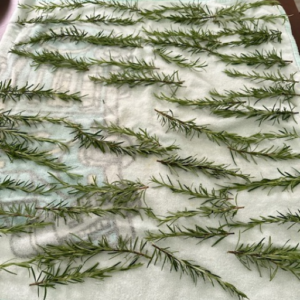
Dried rosemary can add a wonderful depth of flavor to many different dishes. To use dried rosemary most effectively, start by crushing or rubbing between fingers before adding your recipe, as this releases their essential oils, enhancing aroma and taste. It’s better to include early on during cooking so that intense flavors can mingle with other commonly used ingredients, like seasoning roasted meats, adding vegetable dishes, and mixing marinade dressings. It should work well here, too, but remember when using concentrated dried herbs, one teaspoon equals about one tablespoon of fresh ones, as called for in the original instructions.
Substituting Fresh Rosemary with Dried Rosemary
When using dried rosemary instead of fresh, the most important thing to remember is that dried herbs are more flavorful. The rule of thumb is 1 teaspoon for every tablespoon. But powdered rosemary can be stronger, so it’s best to start small and work your way up. You should also crush them before use because they have a different texture than fresh ones; this will help release their essential oils and make your dish taste better! And don’t forget: if the recipe calls for fresh rosemary added at the end of cooking, add the dried version earlier so its flavors have time to develop fully.
Best Practices for Using Dried Herb in Cooking
- Store Properly: To keep potency intact, store dried herbs in cool, dark places like cupboards or pantries with airtight containers where moisture, heat, and light exposure cannot reach them. This ensures that their flavors remain preserved longer!
- Timing of Addition: For best results, adding dried herbs into recipes during the cooking process should occur early enough to allow sufficient time for flavors from those ingredients to permeate through all parts evenly without overpowering other elements at play, which may be caused by rapid addition late on.
- Use Sparingly: Begin small with any concentrated seasoning until you know how much suits your palate; typically, use one-third of what you would have used had it been fresh.
- Rehydrate When Needed: Sometimes, rehydrating larger quantities of drought-ridden plants through oil or water prior will yield better results by allowing even distribution across all parts during longer cook times required by specific recipes.
-
Combining Flavours: Take into consideration different herb profiles before combining them. At the same time, this technique allows more intricate tastes to emerge within dishes; care should still be taken not to overpower weaker ones such as thyme or rosemary with stronger alternatives like basil due to the risk of ruining the overall balance achieved otherwise.
Airtight Container Important to Maintain Freshness of Dried Herbs
Dried herbs must be stored in an airtight container to keep them fresh. These containers prevent dried herbs from being exposed to air, which can cause them to oxidize and lose their flavor. Glass or opaque containers are best for keeping light out, but can also degrade the quality of the herbs. Furthermore, it is important to keep the container in a cool, dark place, as this will lengthen the shelf life and potency of dried herbs. You should regularly check for any signs of moisture because even small amounts can ruin freshness.
Common Issues When Dehydrating Rosemary
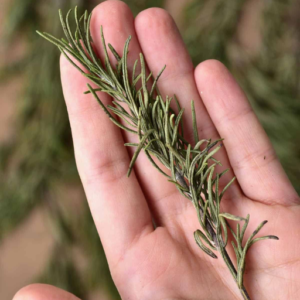
You may face several challenges when dehydrating rosemary that could affect the quality of your final product. One issue is over-drying, which causes essential oils and flavors to evaporate, making it less aromatic than desired. To avoid this problem, you should closely monitor drying until crispy. Still, not overly brittle stems develop on top of leaves at the bottom edge where they were attached before drying began, the more tender parts closer toward the center. Mold growth becomes another concern if rosemary isn’t sufficiently dried before storage; therefore, complete dehydration is necessary before putting it into an airtight container! Stem retention might be challenging, too, since removing woody stems takes time, but doing so ensures uniform texture throughout the final product that’s pleasing visually and gustatorily! Lastly, choose dry days for better results because humid weather affects efficiency during the dehydration process negatively due to insufficient airflow around moistened plant material exposed surfaces where transpiration occurs most rapidly due to warm sunlit conditions typical summer months hereabouts – or anywhere else.
What to Do if Rosemary Is Not Completely Dry?
If your rosemary isn’t quite dry yet, there are a few things you can do to fix the problem:
- Dehydrator or Oven Again: Put it back in the dehydrator or oven set to low temperature (95°F-115°F or 35°C-46°C) for further drying. Check frequently so it doesn’t burn.
- More Airflow: If using a dehydrator, be sure not to crowd the trays, as this will block airflow. Spreading a single layer helps speed up drying.
- Air Drying: If you took the rosemary down too soon, hang sprigs in a warm, dry location with good ventilation for several more days until they reach desired dryness.
Following these methods assures that your rosemary dries properly and preserves flavor and aroma for later use.
How to Avoid Rosemary Becoming Too Brittle?
Monitor time and temperature closely during this stage to keep rosemary from getting too brittle while drying. Set a dehydrator/oven at low heat, around 95°F-115 °F(35 °C – 46 °C), which allows moisture removal gradually over time. Also, keep an eye on it throughout the process, removing once crispy but still slightly pliable texture is achieved. Use vacuum bags or wrap them in paper rather than plastic when storing since they help retain some moisture and prevent brittleness during storage.
Troubleshooting Tips for Using Dehydrators
Dehydrators are great kitchen appliances, but sometimes they can cause problems. Here are some quick fixes that may help:
- If some items are drying faster than others, check to see if air is circulating properly in your dehydrator. Do not overload trays, and ensure the fan works correctly. Rotate trays often to promote even drying.
- If your food has a strange smell or taste, it could be because the dehydrator was not cleaned well before use. Oil or spices left over from previous batches might have contaminated new foods, too. You can also try using food-grade drying nets to keep delicate flavors safe.
-
If food isn’t fully dried, double-check temperature settings against those recommended for specific types of food being dried out—they should match up! Sometimes, you need to increase drying times as well, especially when working with thicker slices of fruit/vegetable mixes.
Following these tips and keeping an eye on your settings can make sure your dehydrator works better.
Frequently Asked Questions (FAQs)
Q: What are the different methods to dry fresh rosemary?
A: There are several methods for drying fresh rosemary, including using a dehydrator, microwave, oven, or air dryer. Each method has its own advantages, depending on your preferences and available equipment.
Q: How do I dry rosemary in a dehydrator?
A: To dry rosemary in a dehydrator, place fresh rosemary sprigs in the dehydrator, ensuring they do not overlap. Set the dehydrator to a low temperature, around 95-115°F, and let the rosemary dry for about 6-8 hours or until the leaves are dry and brittle.
Q: What is the drying time for rosemary using different methods?
A: Drying time varies based on the method: drying rosemary in a dehydrator takes about 6-8 hours, in the microwave takes several minutes, in the oven takes 2-4 hours, and air drying can take 1-2 weeks depending on humidity.
Q: How can I dry rosemary in the microwave?
A: To dry rosemary in the microwave, place sprigs of rosemary between two paper towels on a microwave-safe plate. Microwave on high for 1-2 minutes, checking every 30 seconds, until the leaves are dry and brittle.
Q: What is the correct way to store the dried rosemary?
A: Once the rosemary is fully dried, store it in an airtight container in a cool, dark place. This will help maintain its flavor and extend its shelf life.
Q: What amount of fresh rosemary is equivalent to dried rosemary?
A: Typically, 1 tablespoon of fresh rosemary is equivalent to 1 teaspoon of dried rosemary. The drying process concentrates the flavor, so you need less dried rosemary in recipes.
Q: How do I know if the rosemary is fully dried?
A: The rosemary is fully dried when the leaves are dry and brittle to the touch. They should easily crumble between your fingers. If the leaves still have moisture, continue drying until all moisture is gone.
Q: Why would I want to dry my rosemary instead of using it fresh?
A: Drying rosemary allows you to preserve the herb for longer, ensuring you always have rosemary on hand, even when it’s not in season. Also, some recipes specifically call for dried rosemary due to its concentrated flavor.
Q: Can I dry rosemary using a drying rack?
A: Yes, you can dry rosemary using a drying rack. Spread the rosemary sprigs evenly on the rack, ensuring good air circulation. Place in a well-ventilated area away from direct sunlight. This method usually takes 1-2 weeks.
Q: Is rosemary an evergreen plant?
A: Yes, rosemary is an evergreen shrub, meaning it retains its leaves throughout the year. This makes it a great plant for both fresh and dried use at any time of the year.













